Die statistische Prozesskontrolle (SPC) ist der Schlüssel zum Qualitätsmanagement. Sie gibt Einblicke in Echtzeit, um die Prozessleistung und eine hohe Produktqualität. Diese Methode ist in der Fertigung unerlässlich, um Prozesse zu verfolgen und unerwünschte Abweichungen zu reduzieren.
Mit SPC können Unternehmen ihre Prozesse verbessern, Fehler reduzieren und die Produktivität steigern. Mithilfe statistischer Werkzeuge können Unternehmen verschiedene Ursachen für Veränderungen erkennen. So können sie Probleme schnell beheben und die Qualität hoch halten.
Die wichtigsten Erkenntnisse
- SPC hilft bei der Identifizierung allgemeiner und spezieller Ursachen für Abweichungen in der Fertigung.
- Der wirksame Einsatz von Regelkarten ist entscheidend für die Prozessverbesserung im Rahmen der SPC.
- Die historische Entwicklung der SPC geht auf die Arbeit von Walter A. Shewhart in den 1920er Jahren zurück.
- Ein optimaler Stichprobenumfang und eine ordnungsgemäße Datenerfassung sind für eine genaue SPC-Analyse unerlässlich.
- Echtzeitüberwachung und -analyse erleichtern die Einhaltung hoher Qualitätsstandards.
Die Grundlagen der statistischen Prozesskontrolle (SPC) verstehen
Statistische Prozesskontrolle (SPC) ist eine wichtige Technik in der heutigen Fertigungsindustrie und anderen Branchen. Sie nutzt statistische Analyse die Prozesse im Auge zu behalten, um qualitativ hochwertige Ergebnisse zu erzielen. Dank SPC werden die Produkte gleichmäßiger, die Fehlerquote sinkt und die Abläufe laufen reibungsloser.
Definition und Bedeutung
Die American Society for Quality (ASQ) bezeichnet die statistische Prozesskontrolle als "die Verwendung von Statistiken zur Steuerung eines Prozesses". SPC hilft herauszufinden, warum Prozesse schwanken. Dann werden diese Probleme behoben, um die Produktqualität zu verbessern und den Ausschuss zu verringern. So konnte beispielsweise ein Automobilwerk mit SPC seine Fehlerquote in nur sechs Monaten um 37% senken. Auch ein Elektronikhersteller steigerte seine Produktion um 22%.
Historischer Hintergrund
Die statistische Prozesskontrolle begann in den 1920er Jahren mit Dr. Walter Shewhart in den Bell Laboratories. Die Ideen von Dr. Shewhart zur Messung von Prozessänderungen waren bahnbrechend. Später wurde SPC in Japan dank W. Edwards Deming stark verbessert. Im Laufe der Zeit wurde SPC überall auf der Welt zum Schlüssel für die Qualitätskontrolle.
Grundprinzipien
Die Grundlagen der SPC sind unerlässlich, um sie richtig einzusetzen. Die wichtigsten Teile sind:
- Analyse der Prozessvariation: den Unterschied zwischen normalen Prozessschwankungen und solchen, die auf Probleme hinweisen.
- Prozessstabilität: die Leistung durch ständiges Überprüfen und Optimieren konstant zu halten.
- Kontinuierliche Verbesserung: Wir nutzen stets Daten, um Wege zu finden, Dinge besser und mit höherer Qualität zu tun.
Diese Ideen machen SPC zu einem großartigen Instrument, um die Qualität hoch zu halten. A Medizinprodukt Unternehmen eine um 45% niedrigere Rate an Kundenbeschwerden mit SPC. Und der Verpackungssektor sparte $1,2 Millionen pro Jahr.
Realisierte Vorteile
| Industrie | SPC-Implementierung Ergebnis |
|---|---|
| Automobilindustrie | 37% Verringerung der Fehlerquote |
| Elektronik | 22% Erhöhung des Durchsatzes |
| Medizinisches Gerät | 45% Rückgang der Kundenbeschwerden |
| Verpackung | $1,2 Millionen an jährlichen Einsparungen |
| Feinmechanische Bearbeitung | 62% Verringerung der Teile, die nicht den Spezifikationen entsprechen |
| Krankenhaus ER | 28% Verkürzung der durchschnittlichen Wartezeiten |
| Halbleiter | 18% Verbesserung des Ertrags |
Die Rolle der Kontrollkarten in der SPC
Regelkarten sind der Schlüssel zur statistischen Prozesskontrolle (SPC). Sie zeigen Daten im Zeitverlauf. Dies hilft, normale von besonderen Veränderungen zu unterscheiden. Sie verfolgen, wie ein Prozess abläuft, was für eine gute Qualität bei der Herstellung von Produkten entscheidend ist.
Arten von Kontrollkarten
Anders Regelkarten werden für bestimmte Datentypen und Verwendungszwecke erstellt:
- X-Bar- und Bereichsdiagramme: am besten für Untergruppengrößen von 2 bis 10. Sie prüfen die Stabilität der Mittelwerte der Untergruppen innerhalb der Kontrollgrenzen. Diese Grenzen werden auf drei Standardabweichungen vom Mittelwert festgelegt.
- X-Balken und Sigma-Diagramme: gut für größere Untergruppen. Sie geben einen besseren Überblick darüber, wie der Prozess variiert.
- Individuelle X- und Moving-Range-Diagramme (IX-MR): Ideal, wenn es nur ein Element in einer Untergruppe gibt. Zum Beispiel, um jede Messung für sich zu betrachten.
- Zone Diagramme: Sie kombinieren Merkmale von X-Bar- und CUSUM-Diagrammen. Die Datenpunkte werden in Abweichungsbereichen markiert, um Probleme hervorzuheben.
- Kumulative Summe (CUSUM) Diagramme: Sie eignen sich hervorragend, um Veränderungen im Mittelwert zu erkennen. Dazu werden die Abweichungen im Laufe der Zeit addiert.
- HistogrammeDiese Diagrammstichproben dienen dazu, zu untersuchen, wie häufig Datenmuster auftreten.
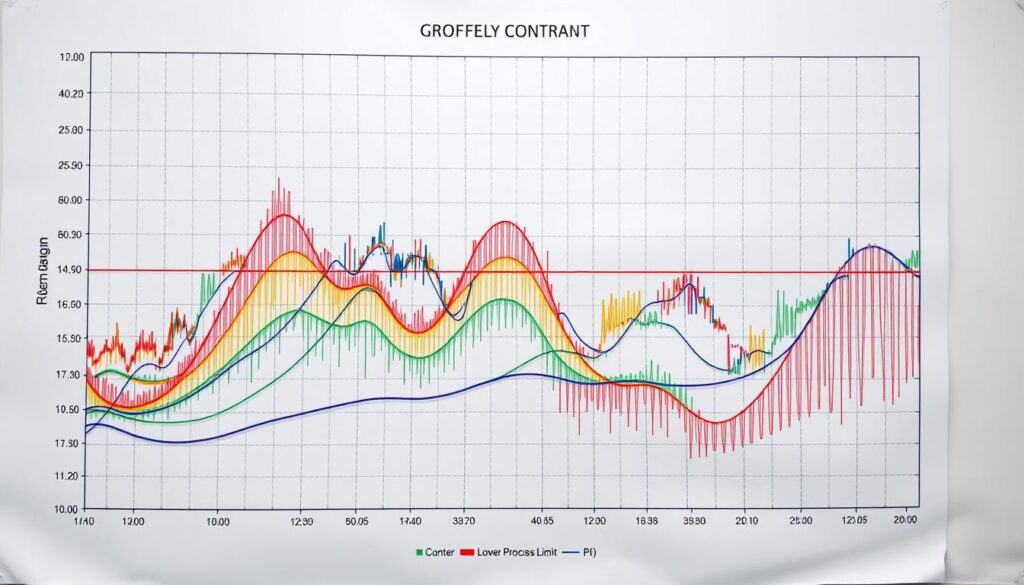
Interpretation von Kontrolldiagrammen
Das Verständnis von Regelkarten hilft dabei, die Gründe für Abweichungen herauszufinden und sie schnell zu beheben. Die Kontrollgrenzen liegen in der Regel bei drei Standardabweichungen vom Mittelwert. Dadurch werden normale Veränderungen von besonderen unterschieden. Die Western Electric Rules helfen bei der Erkennung von Problemen. Ein Datenpunkt, der außerhalb der 3-Sigma-Grenze liegt, oder mehrere Punkte in der Nähe der Kontrolllinien weisen beispielsweise auf Probleme hin.
Anwendung in verschiedenen Branchen
Kontrollkarten sind in vielen Bereichen wichtig, nicht nur bei der Herstellung von Produkten. Im Gesundheitswesen kontrollieren sie Prozesse, um die Qualität der Pflege zu sichern. Sie können verfolgen, wie lange es dauert, Medikamente zu verabreichen. Dadurch werden Probleme wie Geräteprobleme oder zu wenig Personal aufgedeckt. Im Finanzwesen erkennen Regelkarten merkwürdige Dinge in Transaktionen, um Betrug zu verhindern.
Die Verwendung von Regelkarten in der SPC ermöglicht den Unternehmen eine Überwachung und Analyse in Echtzeit. Dies ist der Schlüssel zur Verbesserung von Prozessen und zur Aufrechterhaltung von Qualitätsstandards.
Schritte zur Einführung von SPC in Ihrem Unternehmen

Der Einsatz von SPC in Ihrem Unternehmen erfordert sorgfältige Schritte. Diese sorgen dafür, dass sich Ihre Bemühungen um SPC wirklich auszahlen und die Qualität und Arbeit steigern. Es geht darum, die Dinge mit der Zeit besser und effizienter zu machen.
Festlegung von Messmethoden
Zunächst brauchen Sie solide Messmethoden. Genaue, konsistente Daten sind der Schlüssel. Sie helfen, die Dinge richtig zu analysieren. Verwenden Sie Instrumente wie Ursache-Wirkungs-Diagramme und Histogramme, um Probleme zu erkennen und einzuordnen. Dies hilft Managern, Probleme zu verstehen und richtig zu handeln.
Qualifizierung des Messsystems
Es ist wichtig, dass Sie überprüfen, ob Ihre Messungen korrekt sind. Dies geschieht durch die Analyse Ihres Messsystems. Eine gängige Methode ist die R&R-Messung (Wiederholbarkeit und Reproduzierbarkeit). Dieser Schritt bestätigt, ob Ihre Daten verlässlich sind, was für die Erstellung präziser SPC-Diagramme nützlich ist.
Datenerhebung und Diagrammerstellung
Die Datenerfassung sollte geordnet erfolgen und alle Teile des Prozesses erfassen. Anschließend werden die Daten in SPC-Diagramme übertragen, um das Verhalten des Prozesses im Auge zu behalten. Diagramme wie gleitende Bereiche und X & R helfen, Schwankungen aufzuzeigen und signalisieren, wenn etwas nicht stimmt. Das Sammeln von Daten und die Erstellung von Diagrammen helfen bei der Verbesserung des Prozesses und der Vorhersage von Ergebnissen.
Ausarbeitung eines Reaktionsplans
Die Erstellung eines handlungsfähigen Plans auf der Grundlage der SPC-Ergebnisse hilft bei schnellen Entscheidungen. Dieser Plan listet Schritte für den Fall auf, dass die Dinge nicht wie geplant laufen. Die Lösung von Problemen erfordert oft Teamarbeit, wie Dr. W.E. Deming mit 94% von Problemen, die gemeinsame Anstrengungen erfordern, hervorhob. Ein solider Plan sorgt dafür, dass alles unter Kontrolle bleibt und Verbesserungen fortgesetzt werden.
| Aktionsschritt | Beschreibung | Vorteile |
|---|---|---|
| Festlegung von Messmethoden | Verwendung von Werkzeugen wie Histogrammen und Pareto-Diagrammen zur Priorisierung von Problemen. | Verbessertes Verständnis von Abweichungen und genaue Daten. |
| Qualifizierung des Messsystems | Durchführung von Messsystemanalysen, um die Zuverlässigkeit der Daten zu gewährleisten. | Genaue und zuverlässige Datenerfassung. |
| Datenerhebung und Diagrammerstellung | Systematische Datenerfassung und Verwendung von SPC-Tabellen. | Wirksame Überwachung und Vorhersage von Prozessergebnissen. |
| Ausarbeitung eines Reaktionsplans | Erstellung eines Plans für rechtzeitige Interventionen auf der Grundlage der SPC-Analyse. | Erhöhte Kontrolle und nachhaltige Verbesserungen. |
Das Durchlaufen der SPC mit diesen geplanten Maßnahmen trägt zum Aufbau einer Kultur der kontinuierlichen Verbesserung bei. Es bringt Arbeiter zusammen...
Sie haben 57% des Artikels gelesen. Der Rest ist für unsere Community. Sie sind bereits Mitglied? Einloggen
(und auch um unsere Originalinhalte vor Scraping-Bots zu schützen)
Innovation.world Gemeinschaft
Anmelden oder Registrieren (100% kostenlos)
Lesen Sie den Rest dieses Artikels und alle Inhalte und Tools, die nur für Mitglieder zugänglich sind.
Nur echte Ingenieure, Hersteller, Designer und Marketingfachleute.
Kein Bot, kein Hater, kein Spammer.
Verwandte Lektüre & Methoden
- Vollständiges Qualitätsmanagement (TQM): konzentriert sich auf kontinuierliche Verbesserung und Kundenzufriedenheit durch systematische Prozessverbesserungen.
- Planung von Experimenten (DOE): eine statistische Methode zur Planung, Durchführung und Analyse kontrollierter Tests zur Bewertung der Faktoren, die die Prozessergebnisse beeinflussen.
- Just-in-Time (JIT) production: eine Strategie zur Steigerung der Effizienz und zur Verringerung der Verschwendung, indem Waren nur dann angenommen werden, wenn sie im Produktionsprozess benötigt werden.
- Prozessabbildung: visuelle Darstellung eines Prozesses, um verbesserungswürdige Bereiche zu identifizieren und Arbeitsabläufe zu optimieren.
Häufig gestellte Fragen
Was ist statistische Prozesskontrolle (SPC)?
SPC ist eine Methode zur Verbesserung der Qualität von Produkten. Sie nutzt Statistiken, um die Konsistenz der Prozesse zu überwachen und zu verbessern. Mit dieser Methode wird die Qualität der Produktion in Echtzeit überprüft.
Warum ist SPC in der Qualitätskontrolle wichtig?
SPC ist der Schlüssel für die Durchführung strenger Qualitätskontrollen in verschiedenen Bereichen. Sie hilft, normale Veränderungen in Prozessen zu erkennen. Dies führt zu stabilen Prozessen und besseren Produkten und macht die Abläufe effizienter.
Was sind Regelkarten in der SPC?
Regelkarten sind wichtige SPC-Werkzeuge. Sie zeigen Prozessdaten im Zeitverlauf und heben normale und ungewöhnliche Veränderungen hervor. Es gibt verschiedene Diagramme wie X-Bar und R für verschiedene Datenanforderungen.
Wie helfen Regelkarten bei der Analyse von Prozessschwankungen?
Regelkarten erkennen Probleme frühzeitig, indem sie zeigen, welche Abweichungen von der Norm vorliegen. So lassen sich Probleme schnell beheben. Es wird einfacher, die Prozesse stabil zu halten und die Qualität zu verbessern.
Was sind die Schritte zur Einführung von SPC in einer Organisation?
Um mit SPC beginnen zu können, brauchen die Unternehmen gute Messmethoden und müssen diese genau bewerten. Sie sollten systematisch Daten sammeln und SPC-Diagramme effektiv nutzen. Ein solider Aktionsplan auf der Grundlage der SPC-Ergebnisse ist entscheidend für rechtzeitige Maßnahmen.
Welche Herausforderungen treten bei der Einführung von SPC häufig auf, und wie können sie überwunden werden?
Zu den Problemen gehören falsch verstandene Daten und schlecht kalibrierte Geräte. Auch gibt es oft Widerstände gegen neue Methoden. Um diese Probleme zu lösen, sind umfassende Schulungen, häufige Systemprüfungen und eine klare Kommunikation über die Vorteile von SPC erforderlich.
Was sind die Vorteile der Anwendung von SPC in Fertigungsprozessen?
Der Einsatz von SPC in der Fertigung verringert die Prozessvariabilität und steigert die Produktivität. Es senkt die Kosten und macht die Kunden zufriedener. Unternehmen können sich proaktiv auf eine bessere Qualität einstellen, was ihnen einen Wettbewerbsvorteil verschafft.
Wie trägt SPC zur Prozessverbesserung in Branchen außerhalb der Fertigung bei?
SPC ist nicht nur für die Fertigung geeignet. Die Konzentration auf Daten, Stabilität und kontinuierliche Verbesserung funktioniert auch im Gesundheits- und Finanzwesen. Sie verbessert die Qualitätskontrolle und Prozessverbesserungen in verschiedenen Sektoren.
Externe Links zur statistischen Prozesskontrolle für Qualität
Internationale Standards
(Bewegen Sie den Mauszeiger über den Link, um unsere Inhaltsbeschreibung anzuzeigen)
Glossar der verwendeten Begriffe
Design of Experiment (DOE): Eine systematische Methode zum Planen, Durchführen und Analysieren kontrollierter Tests, um die Auswirkungen mehrerer Variablen auf eine Antwortvariable zu bewerten und so die Identifizierung optimaler Bedingungen und Wechselwirkungen zwischen Faktoren zu erleichtern.
Just In Time (JIT): Eine Produktionsstrategie, die darauf abzielt, die Lagerkosten zu senken, indem Waren nur dann empfangen werden, wenn sie im Herstellungsprozess benötigt werden. Dadurch wird Abfall minimiert und die Effizienz gesteigert.
Measurement System Analysis (MSA): Eine statistische Methode zur Bewertung der Genauigkeit, Präzision und Zuverlässigkeit von Messvorgängen und -instrumenten. Sie stellt sicher, dass die gesammelten Daten für die Entscheidungsfindung bei der Qualitätskontrolle und Prozessverbesserung gültig und konsistent sind.
Repeatability and Reproducibility (R&R): die Fähigkeit eines Messsystems, unter denselben Bedingungen (Wiederholbarkeit) und unter verschiedenen Bedingungen oder mit unterschiedlichen Bedienern (Reproduzierbarkeit) konsistente Ergebnisse zu erzielen. Diese wird häufig mithilfe statistischer Methoden ausgewertet, um die Variabilität und Zuverlässigkeit von Datenerfassungsprozessen zu beurteilen.
Statistical Process Control (SPC): Eine Methode der Qualitätskontrolle, bei der statistische Techniken zum Überwachen und Steuern eines Prozesses eingesetzt werden. Durch die Identifizierung von Abweichungen und die Aufrechterhaltung einer konsistenten Ausgabe innerhalb festgelegter Grenzen wird sichergestellt, dass dieser sein volles Potenzial ausschöpft.
Total quality management (TQM): Ein Managementansatz, der auf langfristigen Erfolg durch Kundenzufriedenheit ausgerichtet ist und alle Mitglieder einer Organisation in die kontinuierliche Verbesserung von Prozessen, Produkten und Dienstleistungen einbezieht, um Qualität und Leistung zu steigern.
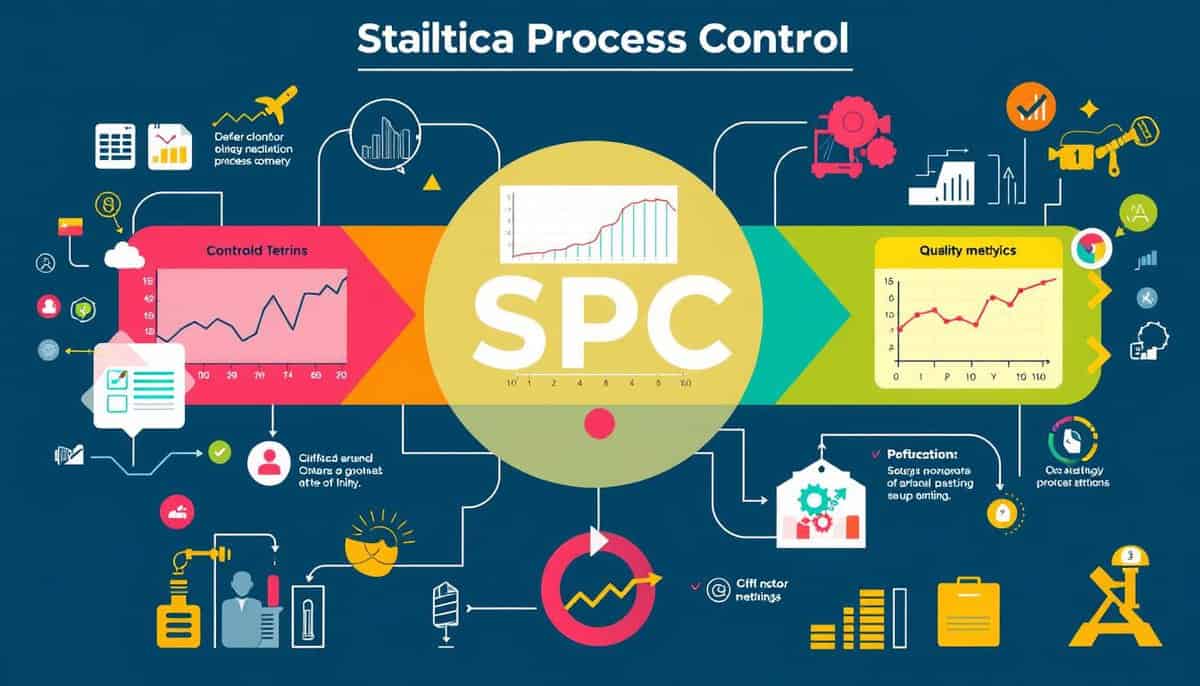





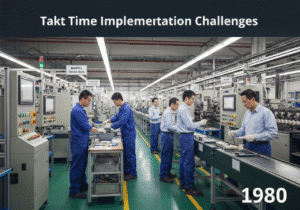

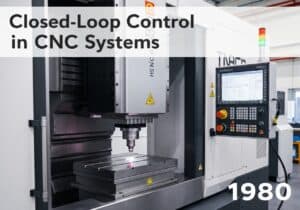









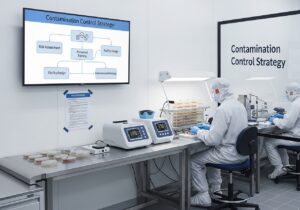
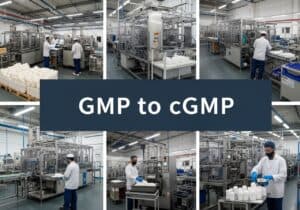







Interessante Lektüre! Aber glauben Sie nicht, dass SPC die Innovation durch eine zu starke Konzentration auf Konsistenz abwürgen könnte? Lassen Sie uns diskutieren.
großartiger Artikel
Wie kann SPC in Dienstleistungsbranchen außerhalb des verarbeitenden Gewerbes eingeführt werden, z. B. im Finanz- oder Gesundheitswesen?
Wie kann die Technologie die Durchführung und Analyse der SPC vereinfachen?
Interessante Lektüre, aber gibt es nicht einfachere Alternativen zur SPC für die Qualitätskontrolle? Scheint für kleinere Unternehmen komplex zu sein, oder?
Der historische Hintergrund war zwar aufschlussreich, aber wie kann man SPC in einer Echtzeit-Produktionsumgebung effektiv anwenden?
SPC ist (eine Art) universell. Sie ist nicht branchenspezifisch, sondern methodenspezifisch.